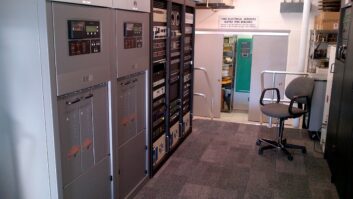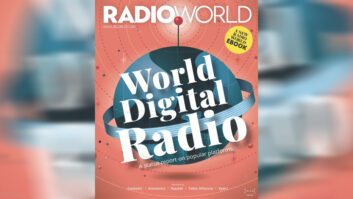The FCC has received fresh comments from the aviation industry regarding a proposal from Xperi and NAB that would allow more U.S. FM stations to increase HD Radio digital power levels.
The aviation industry says it needs further clarifications from the FCC before it can begin collaborative testing with the broadcast industry to identify any possible interference in adjacent aviation radio bands that a power increase might cause.
Members of the aviation community previously submitted comments in the proceeding raising concerns about the potential for harmful interference to aviation VHF receivers operating in the 108-118 MHz Aeronautical Radio Navigation Service (ARNS) allocation, immediately adjacent to the FM broadcast radio band at 88-108 MHz.
In February, the FCC Media Bureau asked for additional public comment after Xperi and NAB identified an important ambiguity in the commission’s rules regarding HD Radio MP1 service mode. They asked the commission to clarify the maximum digital FM power levels permitted for hybrid and extended hybrid service modes.
[Related: “NAB, Xperi Raise Concern Over HD Power ‘Ambiguity’“]
The aviation groups, which include the Airline Pilots Association and The Boeing Company, in comments filed this week say they have engaged with the FM broadcaster community (through NAB and Xperi) to establish additional technical and operational details that would serve as the basis for evaluating the potential for interference; and developing the means to protect ARNS operations critical to aviation safety.
“While the aviation community was initially optimistic that this collaborative work would lead to an expeditious assessment, it quickly became apparent that the preliminary work involved was more complicated,” the aviation groups told the FCC.
The aviation stakeholders say they have worked closely with NAB and Xperi to obtain accurate models that represent the relevant analog and hybrid analog-digital FM waveforms in order to understand the conformity of FM radio transmitters. The groups say this “preliminary work is mostly, but not yet completely, finished.”
The aviation groups say it is still necessary to clarify the exact waveform of the FM analog and hybrid stations. “At this time, the correspondence of that waveform to applicable commission emission limits remains unclear, and improving the clarity of correspondence forms a key part of the ongoing collaboration with NAB and Xperi,” the aviation groups said in comments.
The aviation parties say they recommend that the commission “fully document in its rules the final agreed emission limits in an accurate spectral mask to avoid future confusion or ambiguity of the sort that has bogged down the collaborative efforts” so far.
The groups go further and in a footnote to say that the commission’s rules also allow significant spurious emissions from analog FM signals well above the ARNS band edge “a matter which the contemplated coexistence testing will also evaluate.”
[Related: “Aviation Concerns Slow Digital Power Boost“]
In their latest comments, the aviation groups say they are reserving comment on the NAB request to limit consideration of potential adjacent bands interference issues to only FM stations operating on the 107.9 MHz channel until the collaborative testing described above is completed.
The groups conclude: “The aviation community looks forward to continued collaboration with NAB and Xperi to finish the preliminary work and complete coexistence testing. Once the results are available, then the aviation community can supplement the record in this proceeding with supporting data on the rule changes being considered in this rulemaking and on specific questions raised …”
Xperi and NAB in their own new comments reiterated the need for the FCC to clarify the maximum allowable operating power of a digital FM signal. They suggest the FCC incorporate reference rules from the NRSC-5 standard to eliminate any ambiguity. Read their entire response and other comments in docket MB 22-405.







